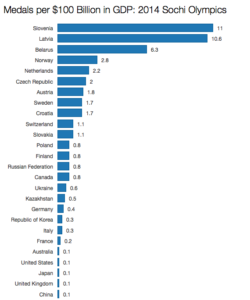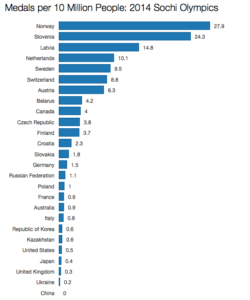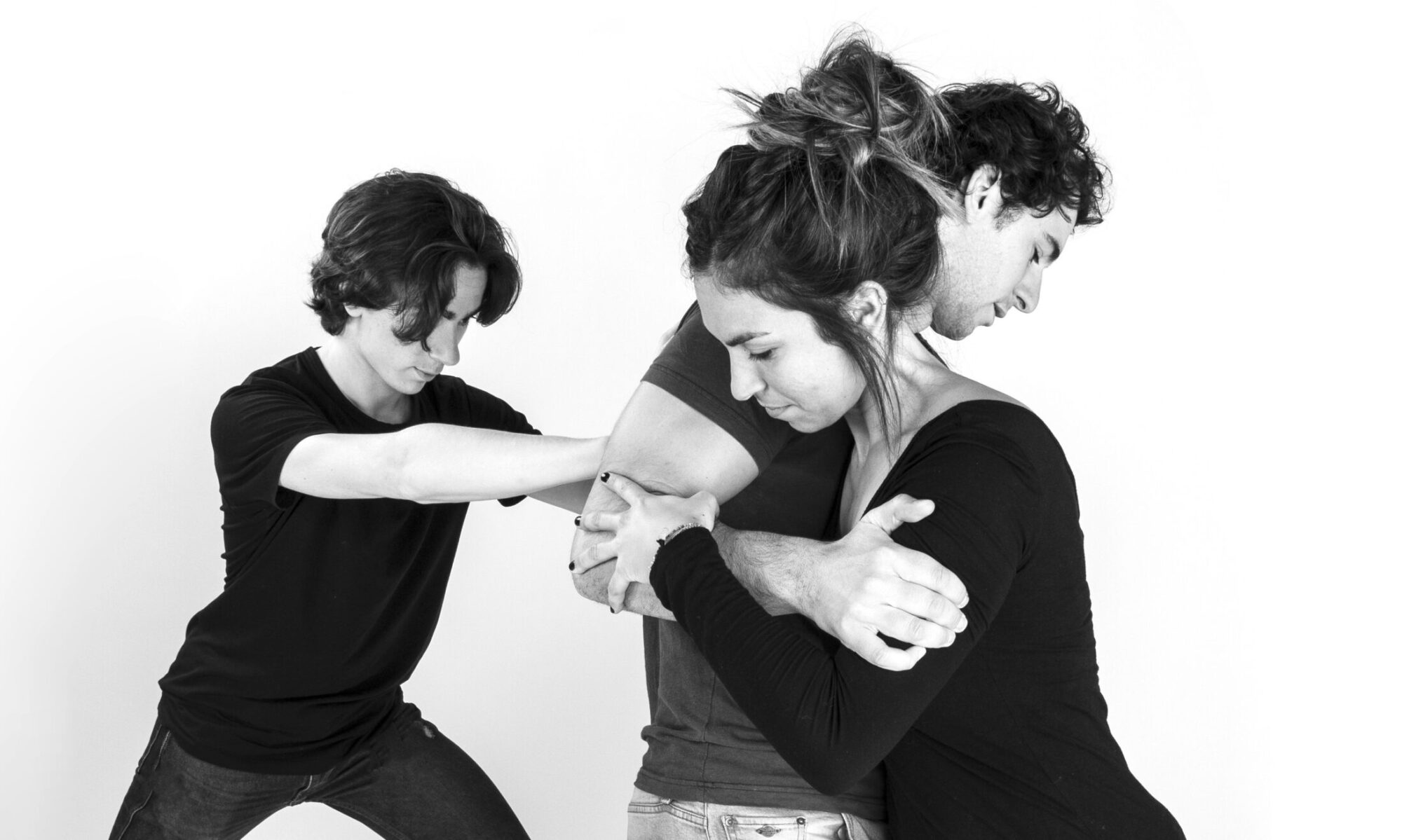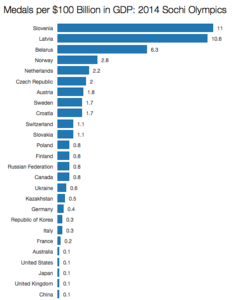Originally published in INNOVACION 6.0 by Xavier Ferràs
Richard Florida, few days ago, tweeted some data about the sports productivity of different countries, measured in terms of medals per 100 bilion GDP, in Sochi Olympic Winter Games.
The results are amazing: they are not the superpowers who dominate the elite sports landscape. They’re small countries. And the explanation, in my opinion, is clear: Olympic productivity is not a matter of big countries. It is a matter of clusters. Specific places, cities, regions, or small countries are the correct environments to develop powerful sport systems, in the same way they’re the right context to develop powerful economic ecosystems. This is a question of microeconomics, culture and social networks (and, of course, strategy, long-term view, and resources provided by the administration). But the starting point is the local environment. Location, again, matters.


In Sochi we’ve seen how small countries outperform in medal productivity big international superpowers. Probably, due to the underlying culture of these countries. A culture that is forged by a specific history and a singular geography. In this case, a history related to mountain scenarios and cold weathers. People in these countries ski, slide and climb peaks since the prehistoric times to hunt and survive, developing specific techniques, transmitting them to the new generations, accumulating experience and knowledge along centuries. The abilities to compete in winter sports are embedded in the territory. And, superposed to these specific attributes, there have been long-term strategies and fine-tuned policies provided by their governments to improve even more the competitive capabilities of the athletes, to generate more sport vocations (from the early school), and to design the proper circuits to elevate the emerging talent to the international level.
This is exactly the same phenomenon as the economic cluster creation and emergence: concentration of talent and specific abilities (technology) in a given, small place. A phenomenon characterized by constant interaction to continuously improve techniques. Internal rivalry and external (international) competition. Support infrastructures and specialized suppliers (to design and sell skies, mountain equipment, etc.). Sophisticated demand, interest for these activities and support by people and by governments.
I’ve had the privilege of have seen the emergence of the Judo cluster in Central Catalonia along almost 40 years. In Manresa (a medium town in the geographical center of Catalonia), there is an astonishing concentration of Judo black belts, and an outstanding number of Judo practitioners among young people and child. The origin was the arrival of a first professor, in 1969, due to random reasons (he was destined to Manresa by the international company where he worked then). He, as a hobbyist, opened a first tatami (gym to practice Judo), and soon he had about 10-15 first practitioners. Ten years later, a entire generation of amateur young black belts was created by the founder. Towards 1985, a third generation of 25-30 new sportsmen started to compete in regional championships. Techniques were immature. Competition tactics, naïve. And no significant results were achieved. But the competitive pressure, the interaction with other regional clubs, and the first international stages improved dramatically the quality and quantity of techniques, and experience and specific knowledge started to accumulate. Some of the members of the new generations, who professionally decided to devote their lives to Judo practice and teaching, spun-out the original club and created their own tatamis. Some of them studied grades related to sports, became university teachers and even developed PhD in related fields (e.g: biomechanics, Judo strategy, etc.). The Barcelona World Championship (91’) and Barcelona Olympics (92’) gave a new prompt to the emerging Judo cluster. Grants were offered to the best competitors as a part of the Olympics program and regional training interchanges were scheduled. The close contact with top level competitors, and the building of supporting infrastructures due to the Olympics effort (like CAR, the High-Performance Centre funded by the Government of Catalonia) were a new step in the Manresa Judo progression. During the period 1995-2000, local young athletes not only succeeded to win Catalan and Spanish titles, but also obtained European-level results. The following years, new generations of judokas emerged. Judo penetrated deeply in schools, media and newspapers turned their attention to the local Judo success, technification centres were created and funded by city councils, new tatamis were opened… And, probably, the strong accumulation of experience and knowledge, fiercely stuck to the territory, will guarantee the practice of Judo in Manresa and surroundings for the next 100 years.
Creating clusters is a matter of local specialization, knowledge accumulation, strong relationships building, learning together, and internationally competing. In sports and in economy.
Thanks to Richard Florida for his brilliant analysis of the medal productivity in the last Olympics!


